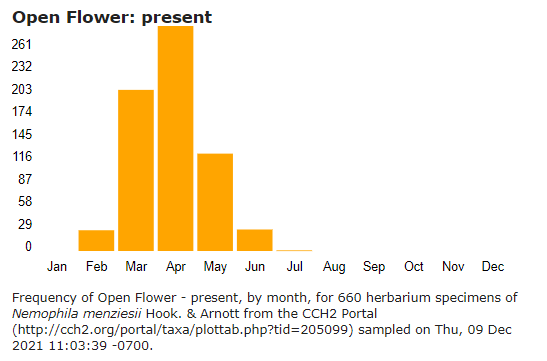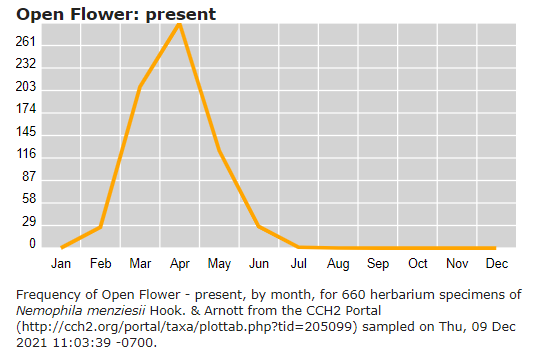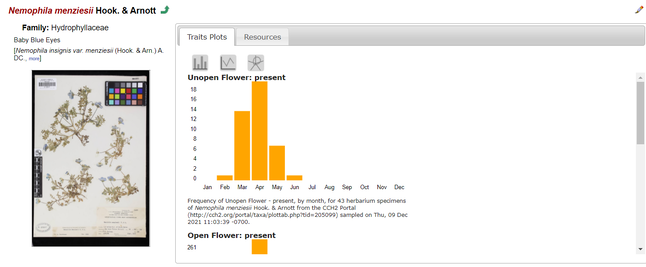After three years of gathering phenological data from herbarium specimens, the Consortium of California Herbaria's CCH2 portal now includes phenological scorings for over 1.6 million herbarium specimens (more info about our methods here). Now, we're excited to introduce a new tool for visualizing these data.
You can now view phenological data for a given taxon aggregated across specimens in the portal. In other words, you can see when, on average, a taxon is budding, flowering, or fruiting. The phenological data are displayed as carefully labeled graphs. You can see how many specimens were included in the count and when the data were analyzed. The graphs are generated on the fly, meaning that as more specimens are scored for their phenological status, they will be automatically added to the graphs.
Shown below is an example of the taxon page for baby blue eyes, Nemophila menziesii, in CCH2. The flowering traits are displayed in the Traits Plots tab. You can switch between the different types of plot by clicking one of the icons at the top of the window, and you can view plots for other traits by scrolling down.
The taxon pages in CCH2 are still under construction—we would like to see more thorough descriptions from published treatments, as well as more field images—but the addition of these phenological data represent a significant and celebrated advance in the availability of these data for end users.
To find the phenological data for your favorite taxon, conduct a search in the portal through the Search Collections tab, clicking List Display to view your options. Then, in the search results, click the name of the taxon on of the records. If the taxon is an angiosperm, you'll likely find a load of data aggregated and displayed on the Traits Plots page.
This tool was developed due to the hard work of Dr. Chris Tyrrell, and we are very grateful for his efforts! Chris designed the code in such a way that it can be used to visualize any time-related traits that have been coded in a Symbiota portal. The code has been integrated into the main Symbiota code and can be integrated into other portals as desired.



